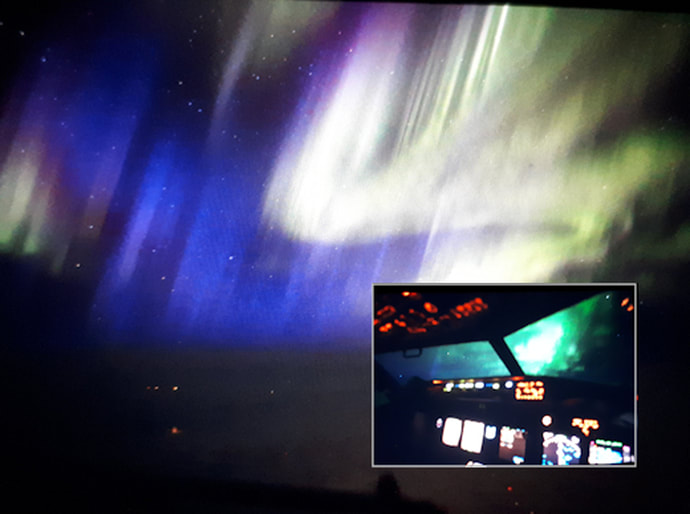"I've been flying airplanes for 20 years and photographing aurora for 10 years, but I've never seen anything like this before" reports pilot Matt Melnyk, who photographed the display from 39,000 feet. "Electric blue auroras!" he says. "This was while on a red eye flight from Edmonton to Toronto around 4 am over northern Manitoba. Unbelievable sky. I was able to grab some hasty shots with a cell phone."
What is an interplanetary shock wave? It is a supersonic disturbance in the gaseous material of the solar wind. These waves are usually delivered by coronal mass ejections (CMEs). Indeed, this one might have been a minor CME that left the sun unrecognized earlier this week.
Alternately, it might have been an unusually sharp co-rotating interaction region (CIR). CIRs are transition zones between slow- and fast-moving streams of solar wind. They contain plasma density gradients and magnetic fields that often do a good job sparking auroras.
www.spaceweather.com
See also: 'Strong New Moon, Solar Activity and Gateways Ahead' by Sandra Walter, Wayshower, Ascension Guide and Gatekeeper

 RSS Feed
RSS Feed